Solo travel wasn’t considered safe, ideal or trendy for Indian women 25 years ago.
Those who traveled alone were often criticized for defying cultural and societal norms — dismissed as adamant, single women who didn’t care about their own safety.
But that didn’t deter Dr. Sudha Mahalingam. When she tagged along on her husband’s work trips abroad, she used the opportunities to tap into her adventurous side.
Her husband, not fond of exploring, would ask Mahalingam to visit the touristy landmarks with a local guide. But she disliked planned trips and packaged tours.
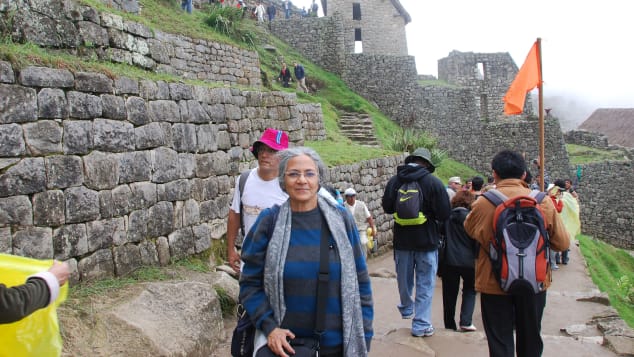
Courtesy Sudha Mahalingam
“Packaged tours are so predictable,” she tells CNN Travel. “They show you what they want to show not what you want to see.
“Two decades ago, Mahalingam quit her job in mainstream print journalism and switched careers to take up energy research. Soon after, she started receiving invitations to speak at international conferences in oil producing countries and the world of travel opened up to her.
Today, at 70, she has visited 66 countries across six continents, which she recounts on her blog Footloose Indian as well as in her book “The Travel Gods Must be Crazy.”
Skydiving in Australia, trekking in Borneo
Owing to a hectic schedule of managing work and family, Mahalingam often had no time to organize her travel, so most of her early trips were sudden and unplanned.She landed in the Czech Republic without a valid visa, faced the challenge of finding vegetarian food in China, got accidentally locked in a monument in Iran and was caught without proof of a yellow fever vaccination at the airport in Nairobi, Kenya.
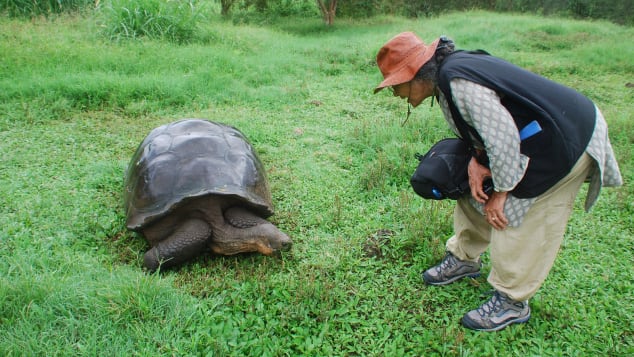
Courtesy Sudha Mahalingam
Though Mahalingam sometimes travels with friends, most of her journeys are solo.
Her most recent international trip, to see lemurs in Madagascar in 2019, was one of her favorite adventurous moments.
“It was absolutely uncharted territory, un-touristy and had very few facilities. It was hardship travel and the way that I like. I was on a boat for three days and the boat didn’t have a toilet,” says Mahalingam of the ride up the Tsiribihina River to Tsingy on the western coast of Madagascar.
“Tsingy is full of jagged blade-like rock formations jutting straight into the sky. It’s quite steep and very difficult to climb these rocks and it lacerates the hand and foot. But after climbing to the other side, you see creatures you don’t see elsewhere in Madagascar.
“Another adventure that stands out for Mahalingam was her trip to Borneo in Southeast Asia.
“There were creepy crawlies everywhere and mounds of leaves one meter high. You put your foot and won’t know if a serpent would twist itself around your leg or whether a scorpion would sting you. It was pouring all the time. I have been to the Amazon jungle as well but it was a cakewalk compared to Borneo,” she says.
Mahalingam has indulged in different adventure sports too, including scuba diving and hang-gliding. She’s also trekked to Everest base camp and, at the age of 66, went skydiving in Uluru, Australia.
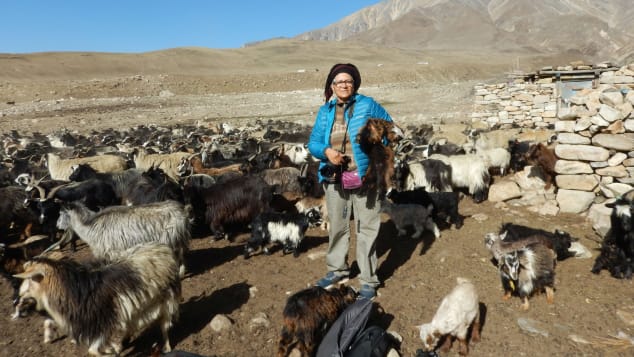
Courtesy Sudha Mahalingam
However, she doesn’t think these activities are a big deal as anyone can do them if they have the money.
There were times she found herself in dangerous situations, including one night in the Kashmir Valley in 1997. She traveled with a stranger ─ an army officer who asked her for a lift — and after a few hours they witnessed a minesweeper vehicle driving towards them from the opposite direction, which had cleared the road of any potential explosives.
On her way to the airport the next day, Mahalingam says the car she was in was shot at by armed militants.
“The Kashmir trip wasn’t particularly stressful but it turned out to be very different from what one would have anticipated. In retrospect, it’s all fun. The driver was driving like a madcap and we were being fired at.
“Bullets had passed the car and one hit the fender. I was crouching at the back and was actually giggling. I didn’t realize the seriousness of it. It was a thrill. Now, when I look back I think maybe it was a foolish thing to do,” she says.
Grounded by the pandemic
Mahalingam, however, notes she doesn’t get stressed out easily and always looks for the fun element in every trip.
Traveling has also taught her to believe in people and has reinforced her faith in humanity.
Visiting remote lands and unknown cultures has made her realize there are many ways to live life.
She says the Aborigines she met in Australia, for instance, live in harmony with nature.
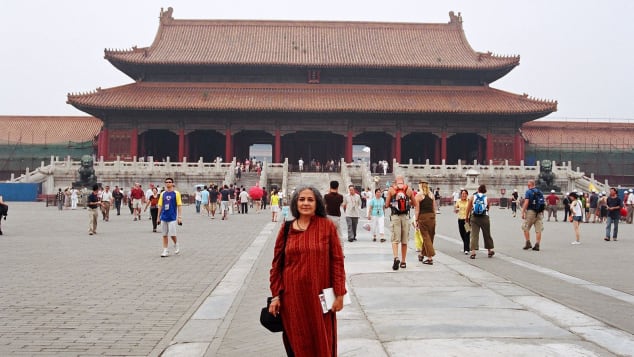
Courtesy Sudha Mahalingam
“They have immense appreciation for the land and respect all living beings and do not think that humans are superior,” she says.
Visiting a ghotul hut and spending time with the Bastar tribals of India’s Chhattisgarh state was another standout moment for Mahalingam.
In the ghotul tradition, young tribal boys and girls come, work and live together until they can decide on one particular partner for life, she says.
“That was a very remarkable way of life. There’s no opprobrium attached to trying out different partners and settling on the right one. In (Indian) society, we frown upon any contact between the sexes but here they respect what is natural and give it ample time to bloom,” Mahalingam says.
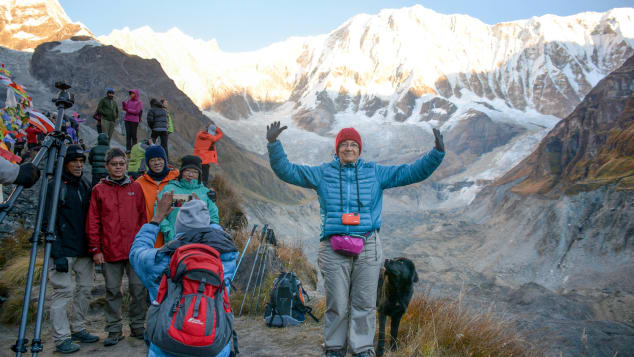
Courtesy Sudha Mahalingam
Staying in a Zen Buddhist monastery in Kyoto, visiting the Galapagos Islands, trekking for 24 days to reach Mustang in Nepal, and meeting people like the Drukpa, who live in harsh climatic conditions and are yet welcoming and happy have been experiences that humbled her.
Now, as she enters her 70s, Mahalingam’s lust for travel hasn’t faded.
In recent months, due to global pandemic travel restrictions, she’s focused on domestic travel — including plenty of road trips.
“I drove to Goa, which was a 16-hour one-stretch drive from Bangalore,” she says. “From there I drove to Dandeli and then to Gokarna. Then, on another trip, I drove to Belur Halebid, where there are two Hoysala temples, and stayed there for a couple of days. I also drove to Hampi which is an eight-hour drive from Bangalore. Next week I’m going to Coorg.
“When the world fully reopens, she wants to train to sail aboard one of the famed Clipper yachts, an expensive but once in a lifetime experiences.
“Some years ago, I met the Clipper team at Belfast in Northern Ireland and while I’m still fit and able, I’d like to do one leg of the Clipper Round the World Race,” she says.
Colombia, Patagonia, Chile and Argentina are other places Mahalingam hopes to visit in the future.
“Even if I travel to three places every year over the next 10 years, I will not be completing my checklist. There’s quite a lot!” she admits.
Article Credit: edition.cnn
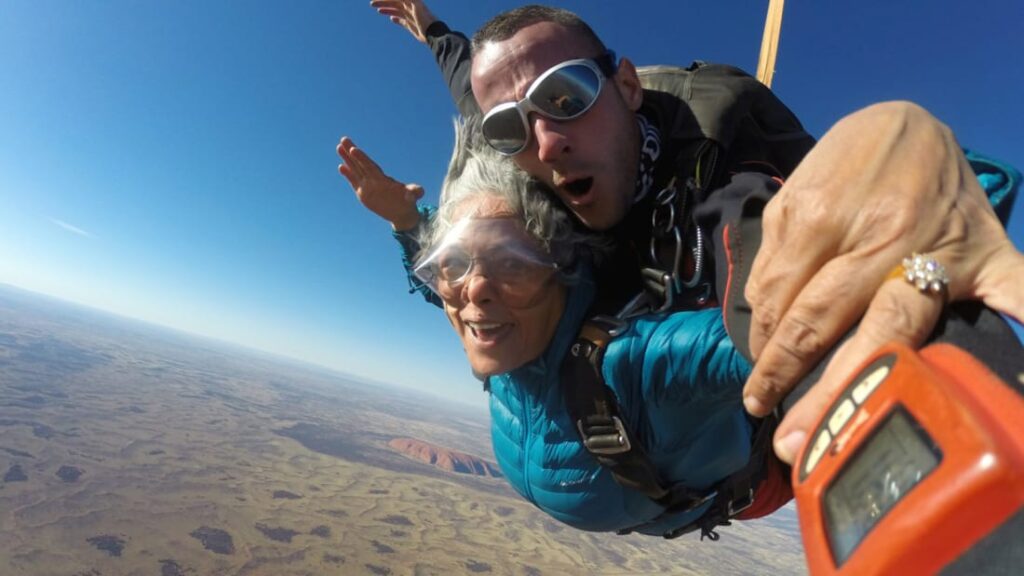
Pingback: ‘Absolutely out of this world’: 95-year-old Manitoba woman checks skydiving off her bucket list - SLSV - A global media & CSR consultancy network